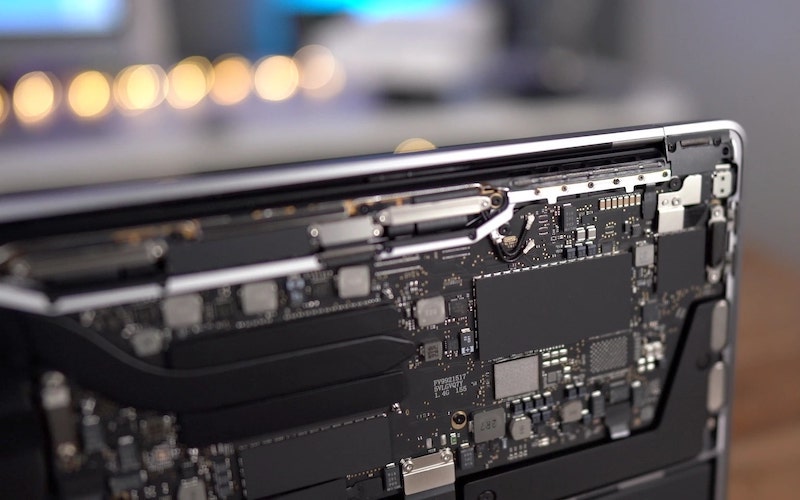Apple portable computers are famous worldwide, and every year the number of active MacBook users is increasing. Users choose the company’s devices for many reasons. Many people like the performance and battery life of the Macs, others like the restrained design and extended support from the manufacturer, and owners of other Apple gadgets can only live with exclusive ecosystem features.

Unfortunately, MacBooks have their drawbacks. Users may encounter various problems during operation. We have collected the most common points and will tell you how to deal with this or that Macintosh problem.
What’s wrong with my Mac: Software bugs
Apple positions the Mac OS as a secure and user-friendly system, and many have noted its high optimization level. But there are no perfect things; eventually, you will have to fix the system. Let’s break down what you may encounter and how to deal with it:
- Kernel Panic. The screen suddenly goes black, and the computer asks to reboot again. This message will annoy you periodically, increasing the number of times. In this case, check for Mac OS updates and install up-to-date software. It’s also worth freeing up more space on the SSD and running First Aid to eliminate possible drive errors.
- Unresponsive keyboard. If the keys are no longer responsive, it’s too early to say it’s a mechanical issue. You need to remove unnecessary cache files and restore macOS program paths. To do this, reboot your laptop with the Shift key held down. You will enter safe mode. Then, reboot the device again.
- Drop in performance and fast battery drain. You may use a large number of background applications. It would help if you went into “Activity Monitor”, opened the CPU tab, and sorted the working applications by the highest consumption. You may force anything you don’t need to shut down. The “Energy” tab is where you can identify the worst offenders that keep running and consuming precious battery percentages.
Remember to reboot your laptop from time to time. Many errors accumulate in the system during operation, and you need to reset them. Rebooting solves most software problems with Mac.
How to fix my MacBook by resetting SMC and NVRAM
If you’re new to the MacBook, you may need to learn about the magical Apple components whose resetting solves most common Mac problems. There’s no magic here. These parts are important enough to link software and hardware.
The SMC is the system management controller. It is where the low-level processes of the system are stored. The system is constantly accessing the SMC memory to identify the operation of the various parts on the board. If an error occurs during chip access, it disrupts the overall operation of the Mac OS and causes Mac computers problems.
As for NVRAM, this is non-volatile RAM. The component always works, even if you turn off the laptop. It stores information about various settings and error logs. The failure algorithm is similar to the SMC. The system fails to read the data or does not do it correctly, so you get another batch of Mac problems.
Let’s take a look at what malfunctions the SMC and NVRAM reset solves:
- The Mac screen suddenly starts flickering;
- Mouse, keyboard, fan, or camera behaves strangely;
- Monitors are not displayed correctly;
- The volume does not respond correctly;
- The time zone or clock is incorrect;
- Trackpad stops working;
- Mac takes a long time to shut down;
- The keyboard backlight doesn’t work correctly or at all;
- The battery doesn’t charge properly, or the power status light doesn’t show its status in a correct way;
- The Mac continually heats up.
In some cases, users managed to solve severe problems. For example, they encountered a situation where the Mac died and won’t turn on. Since each model year has its own procedure for resetting SMC and NVRAM, it’s worth visiting the Apple website and reading the instructions for your device.
How to fix a Mac computer if the previous methods don’t work
Although Apple devices rarely fail due to faulty hardware, the longer you use your Mac, the more likely you will have an Apple hardware issue. The main reason is the natural wear and tear of components. The SSD and battery have a limited lifespan and gradually deteriorate. Mechanical parts break over time, even if you use the device carefully.
Many users accelerate the wear and tear by using non-certified chargers, not ensuring the laptop is overheating, and not performing routine maintenance. And that’s not to mention that the most common mac issues for contacting service centers are a broken screen and spilled liquid.
For fairness, let’s mention Apple’s severe blunders in the first revisions of new devices. Everyone remembers the sticking or complete inoperability of the famous butterfly keyboard with minimal wear life. Also the unsuitable SSD in some models could suddenly erase all data. Many Mac owners have experienced how the anti-reflective coating on the screen gradually peeled off.
Let’s look at common Mac problems and how they are solved:
- The coolers are running loudly or turning on frequently. Clean the dust off and renew the thermal paste on the processor.
- Rapid battery drain or inability to charge. Faulty charge controller, power connector problems, or high battery wear and tear. You need to replace broken components.
- Trackpad or keypad is not working. In many models, the problem is in the motherboard loop, which developers placed over the battery. Accumulated dirt pushes through the loop, so it’s worth cleaning your computer.
You can solve most Apple computer problems at a service center for free or at little cost. It is convenient if your device is under warranty or registered with the AppleCare + program. However, there are some situations, like liquid spills, where you’d like to avoid getting your Mac fixed by Apple. If your device is no longer under warranty, fixing it may also cost you a fortune.
How much does it cost to repair a MacBook ?
If you’ve read this far, you’ve already visited an Apple Authorized Service Center and are familiar with Tier 4 or out-of-warranty service terms. Indeed, if your device has been in contact with water (and is not participating in the AppleCare+ program), replacing parts will cost you $700–1500 plus labor. Even minimal Mac issues won’t mean anything. You’ll still pay a high price to rebuild your MacBook.
But you always have the option of replacing the parts yourself. Apple computers are known for their high level of repairability. You can buy a set of tools and consumables, and laptop repair will be simple enough. This task is simplified because Apple’s self-repair program has released detailed instructions on repairing devices. The only difficulty you will face is the purchase of parts.
The company allows you to buy parts for new devices (only running Apple Silicon chips), and the prices will be pretty high if you don’t want to send Apple your damaged components. And finding original parts for older Macs can be tricky. You can hardly be sure of the authenticity or performance if you buy something from marketplaces.
But you can always go to Appleparts.io. The service experts test the parts in several stages before making them available for sale. Here you can buy original batteries, LCD panels, cooling systems, keyboards, and batteries.
And that’s not to mention rare components like the MagSafe port on your MacBook, released eight years ago. You can also find power adapter wires and parts to fix other accessories.
Computers fail for various reasons, and even quality devices can be susceptible to system errors, defects, or accidental incidents. In most cases, however, you won’t have a problem fixing your Mac. Even if you have to repair your device, you have affordable alternatives.

